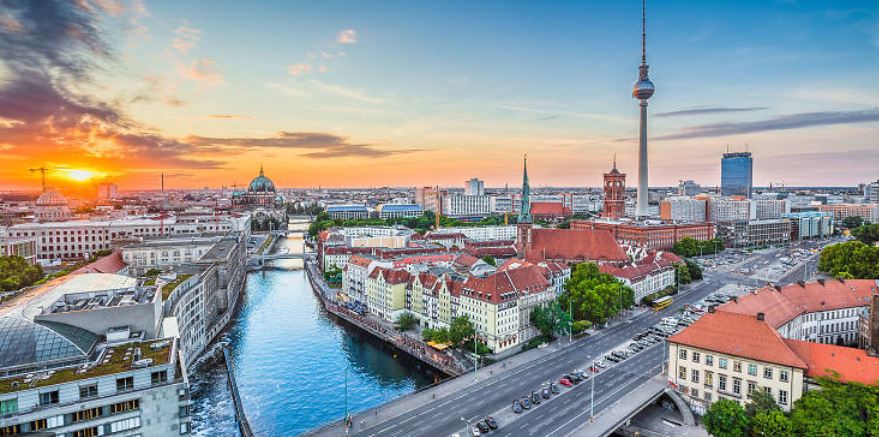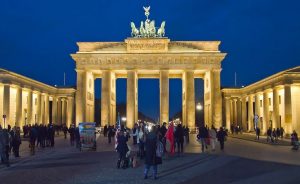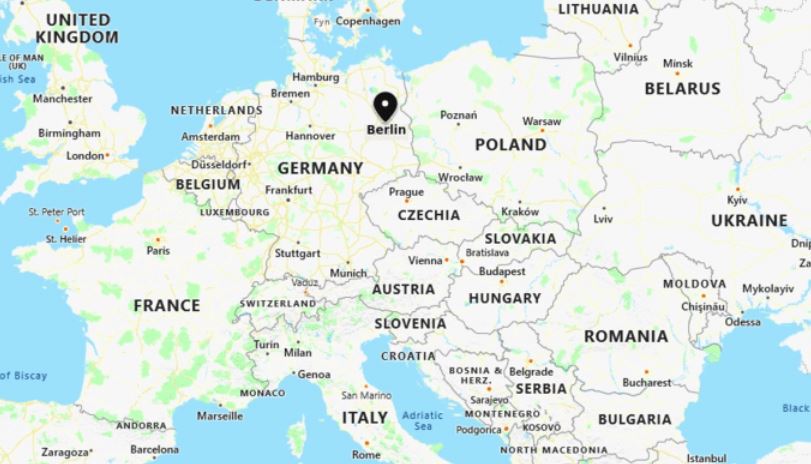Berlin has a long and complex history that is often difficult to trace back. It is a city that has been through many iterations, as it changed hands between various empires over the centuries. As a result, the city has a lot of different influences from different cultures. This can be seen in the architecture, which is a mix of styles from different periods.

The first recorded mention of Berlin occurs in the 12th century, when it was mentioned as a small fishing village. In the 13th century, Berlin became part of the Margraviate of Brandenburg. During this time, it slowly began to grow and develop into a larger settlement. In 1451, Berlin was made the capital of Brandenburg. This helped to accelerate its growth, as it became an important political and economic center.
In the 16th century, Berlin was ravaged by the Thirty Years’ War. This caused a lot of damage to the city, and its population declined sharply. However, Berlin was able to recover in the following years. In 1709, it was briefly occupied by Swedish troops during the Great Northern War. However, they were soon driven out by Prussian forces.
In recent years, historians have debated the true purpose of the Berlin Wall. Was it built to keep people in or keep people out? While we may never know the answer definitively,
During the 18th century, Berlin continued to grow and prosper. It became an important cultural center, with many famous writers and artists living in the city. In 1740, Frederick II came to power and made Berlin the capital of Prussia. Under his rule, the city continued to flourish.
In the 19th century, Berlin became an even more important city. It was the site of many important historical events, such as the unification of Germany in 1871. The city also became a center of industry and commerce. This continued into the 20th century, when Berlin was made the capital of Nazi Germany.
Erection of the Berlin Wall
The Berlin Wall was a physical barrier erected by the German Democratic Republic (GDR, East Germany) to separate West Berlin from East Berlin and surrounding territory of East Germany. The wall cut off West Berlin from vital supplies such as food and fuel, which were provided by West Germany. It also prevented Westerners from entering East Germany. The construction of the wall began on August 13, 1961. On November 11, 1989, following a series of political reforms in East Germany, the wall was destroyed by ecstatic crowds using hammers and chisels.
During World War II, Berlin was heavily bombed by Allied forces. This caused a lot of damage to the city, and its population declined once again. After the war, Berlin was divided into two parts: East Berlin and West Berlin. This division lasted for over 40 years, until the fall of communism. The Berlin Wall was a physical barrier erected by the German Democratic Republic (GDR, East Germany) starting on 13 August 1961, that completely cut off West Berlin from surrounding East Germany and from East Berlin. The wall included guard towers placed along large concrete walls, which circumscribed a wide area (later known as the “death strip”) that contained anti-vehicle trenches, “fakir beds” and other defenses. The Eastern Bloc portrayed the Wall as protecting its population from fascist elements conspiring to prevent the “will of the people” in building a socialist state in East Germany.

In 1989, a series of revolutions in nearby Eastern Bloc countries—Poland and Hungary in particular—caused chain reaction in East Germany that ultimately resulted in the demise of the Wall. On the evening of November 09, 1989, the East German government announced that all GDR citizens could visit West Germany and West Berlin. Crowds of East Germans crossed and climbed onto the Wall, joined by West Germans on the other side in a celebratory atmosphere. Over the next few weeks, euphoric people and souvenir hunters chipped away parts of the Wall; The governments later used bulldozers to remove most of what was left. The fall of the Berlin Wall paved way for German reunification, which formally took place on October 03, 1990.
The Berlin wall was not only a physical barrier between east and west Berliners but also a mental one. For nearly 30 years, the wall separated friends, families and loved ones. It wasn’t until 1989 when the wall finally came down and people were able to be reunited with their loved ones. The fall of the Berlin Wall was a pivotal moment in history that signaled the end of the Cold War.
Today, little remains of the Berlin Wall as it has been largely demolished or repurposed since its fall in 1989. However, there are still a few sections that have been preserved as memorials or tourist attractions.
This is just a brief overview of the long history of Berlin. There is much more to learn about this fascinating city. Hopefully this has whetted your appetite and you will want to learn more or come visit Berlin for some sightseeing.
